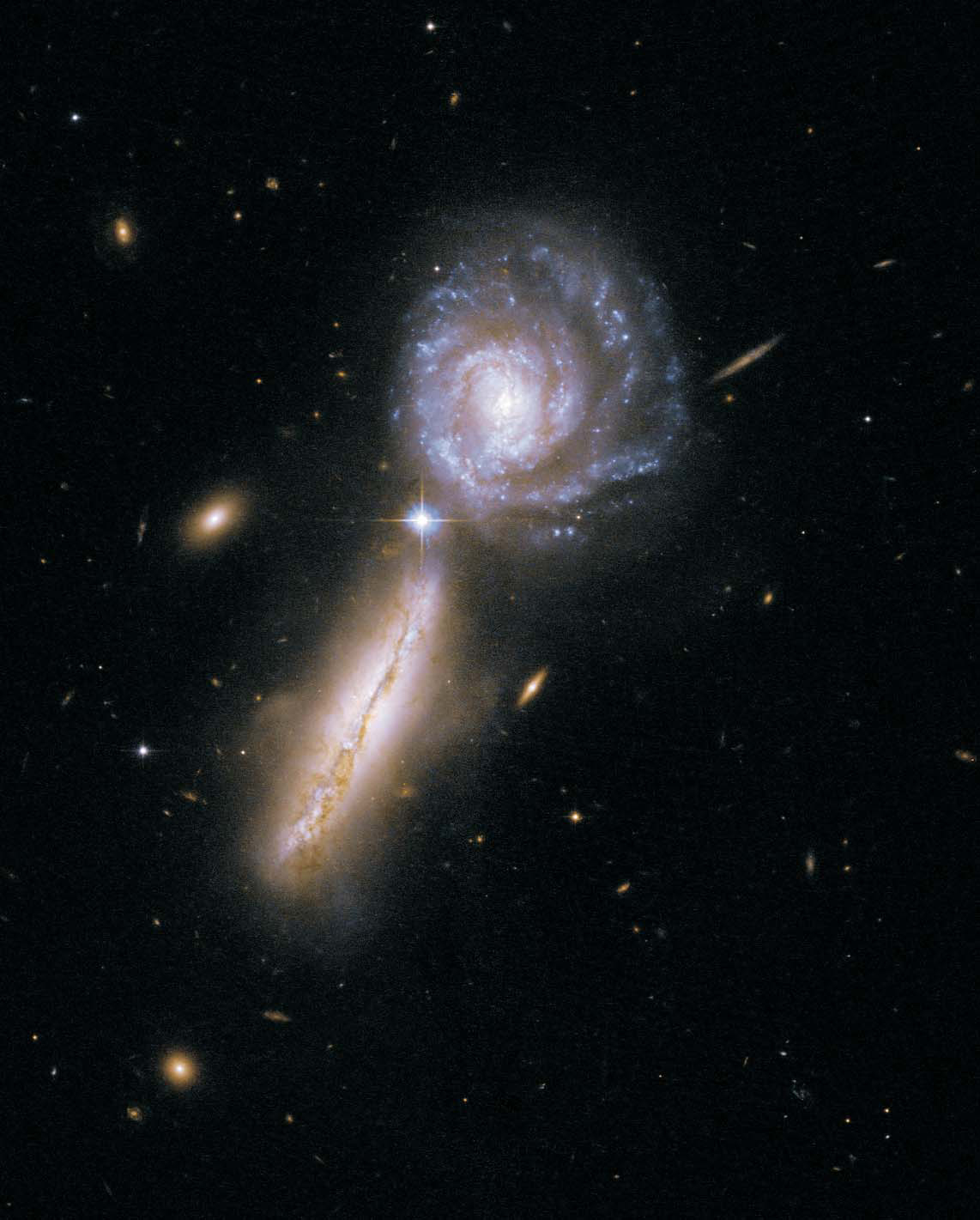When galaxies collide
DOI: 10.1063/1.2947659
Galaxy mergers were much more common in the early universe than they are today. Detailed observations of nearby mergers help astronomers assess the energetic nature of their distant counterparts. To mark the 18th anniversary of the launch of the Hubble Space Telescope , in April NASA and the European Space Agency released 59 new images of colliding galaxies, culled from the telescope’s 32 terabytes of data.
This image from the collection is a false-color composite of pictures taken in the 0.4-µm and 0.9-µm bands. It shows a pair of spiral galaxies, collectively known as UGC 09618, in their early stages of interaction 450 million light-years from Earth. Already, this so-called luminous infrared galaxy merger is emitting more than 20 times the total energy of our Milky Way galaxy. The emission is a combination of light from young, bright stars–formed as gravitationally shocked gas is compressed–and from a bright accretion disk surrounding a supermassive black hole in the center of one or both galaxies. The emitted light heats local dust grains in the merger, and the dust re-radiates the energy as IR light. Over the next hundred million years, the amount of emitted energy will increase as the two galaxies continue to merge under their mutual gravitational pull. In the process, stars, dust, and gas will be drawn out of each galaxy to form long “tidal” tails, and star formation and black hole accretion will ramp up as gas is siphoned into the active central region. The ongoing star formation will generate more light and produce more dust through stellar mass loss, and the merger will continue to glow as one of the brightest IR objects in the sky.
To submit candidate images for Back Scatter, visit http://www.physicstoday.org/backscatter.html

[Courtesy of NASA, ESA, the Hubble Heritage Team (STScl/AURA)-ESA/Hubble Collaboration, and A. Evans (University of Virginia, NRAO, Stony Brook University).]

